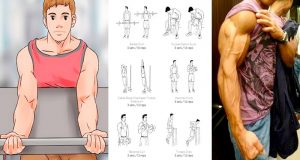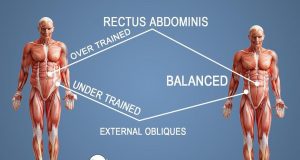Upper Cross Syndrome causes postural deviations of the neck and shoulder. Tightening and hyperactivity of the internal rotators of the shoulder (e.g. the pectorals) and the neck extensors (e.g. the posterior cervical group, the upper trapezius, the sternocleidomastoid muscle) results in inhibition of the deep neck flexors, the scapula retractors (e.g. rhomboid, mid and lower trapezius) and the external rotators of the shoulder (e.g. the rotator cuff). This results in a chin forward slumped posture, often accompanied by shoulder elevation. This dysfunctional postural and movement pattern results in fertile ground for almost all the common musculo-skeletal ailments of the upper body including neck pain, shoulder pain, rotator cuff injury, cervicogenic headache etc. How does one get upper cross syndrome? Look around. Almost everything we do as a society is done in front of us, driving, cooking, writing, cleaning, computer work. Add in a healthy dose of stress (causing upper trapezius hyperactivity) and you have upper cross syndrome!
Kettlebell training (as you would expect) addresses this problem in a dynamic and functional way. In addition to training lower body, core and cardiovascular system, kettle bell training will reverse the upper cross syndrome. Clean and press, snatches and high pulls facilitate and strengthen the mid and lower trapezius, rhomoboids and rotator cuff. This in turn will inhibit the upper traps and neck extensors, reversing shoulder elevation and chin forward posture. Strengthening the scapular retractors and facilitation of the rotator cuff results in external rotation of the shoulders; pulling the shoulders out of the vulnerable internal rotation position. That is why one of the first things you begin to see with someone who is training with kettlebells is improved upright posture.
A proper and well performed kettlebell routine will not only get you in the best shape of your life, but repair the damage done to your body by western lifestyle. Other exercises may increase strength or endurance, but usually do little to reverse the dysfunctional patterns created by day to day life and actually may make things worse. That is why I call the kettlebell workout, cross training for your life.
(c) 2007 Ronald J. Tyszkowski, DC – All Rights Reserved
[ad_2] Crossfit Blogger News, Information and Bestselling Products
Crossfit Blogger News, Information and Bestselling Products




